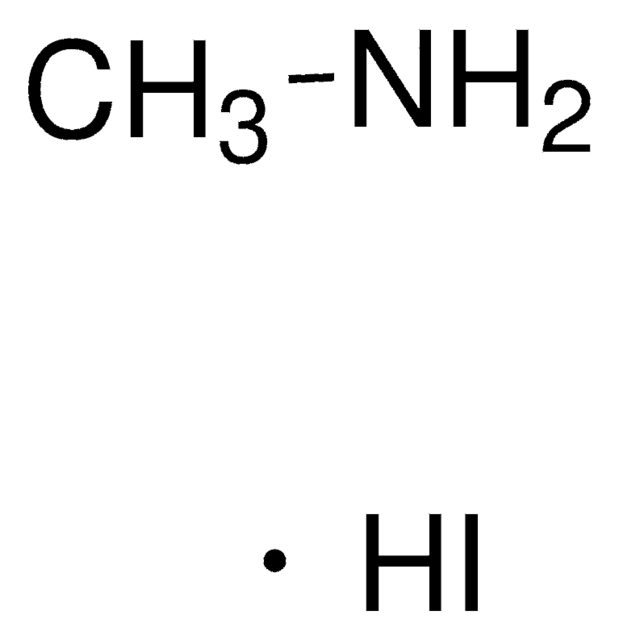923192
Spiro-TTB
≥99% (HPLC)
別名:
2,2′,7,7′- Tetrakis(N,N′-di-p-methylphenylamino)-9,9′-spirobifluorene, 2,2′,7,7′-Tetra(N, N-di-tolyl)amino-spiro-bifluorene, 2,2′,7,7′-Tetra(N,N-di-p-tolyl)amino-9,9-spirobifluorene, 2,2′,7,7′-Tetra(N,N-ditolylL)amino-9,9-spiro-bifluorene, 2,2′,7,7′-Tetrakis(di-p-tolylamino)-9,9′-spirobi[fluorene], 2,2′,7,7′-Tetrakis(di-p-tolylamino)spiro-9,9′-bifluorene, N2,N2,N2′,N2′,N7,N7,N7′,N7′-Octa-p-tolyl-9,9′-spirobi[fluorene]-2,2′,7,7′-tetraamine
About This Item
おすすめの製品
詳細
PL:409 nm (in THF)
TGA:> 360 °C (0.5% weight loss)
Tg: 146 °C
品質水準
アッセイ
≥99% (HPLC)
分子量
average mol wt 1097.43 g/mol
環境により配慮した代替製品の特徴
Design for Energy Efficiency
Learn more about the Principles of Green Chemistry.
sustainability
Greener Alternative Product
損失
0.5% TGA, >360°C
転移温度
Tg 146 °C
溶解性
THF: soluble
λmax
385 nm in THF
軌道エネルギー
HOMO 5.2 eV
LUMO 1.9 eV
環境により配慮した代替製品カテゴリ
, Enabling
類似した製品をお探しですか? 訪問 製品比較ガイド
詳細
アプリケーション
It has been successfully applied as transparent hole-transparent layer in solar cells, organic field-effect transistors (OFETs), and organic light emitting devices (OLEDs). In photovoltaics, spiro-TTB was used as organic hole selective layer between perovskite and the silicon cells, contributing to a 25.2% efficency perovskite/ silicon tandem solar cell. When used in OLEDs, spiro-TTB enabled applications in organic photodetectors (OPDs), imaging and lasing applications.
保管分類コード
11 - Combustible Solids
WGK
WGK 3
引火点(°F)
Not applicable
引火点(℃)
Not applicable
適用法令
試験研究用途を考慮した関連法令を主に挙げております。化学物質以外については、一部の情報のみ提供しています。 製品を安全かつ合法的に使用することは、使用者の義務です。最新情報により修正される場合があります。WEBの反映には時間を要することがあるため、適宜SDSをご参照ください。
労働安全衛生法名称等を表示すべき危険物及び有害物
名称等を表示すべき危険物及び有害物
労働安全衛生法名称等を通知すべき危険物及び有害物
名称等を通知すべき危険物及び有害物
最新バージョンのいずれかを選択してください:
ライフサイエンス、有機合成、材料科学、クロマトグラフィー、分析など、あらゆる分野の研究に経験のあるメンバーがおります。.
製品に関するお問い合わせはこちら(テクニカルサービス)